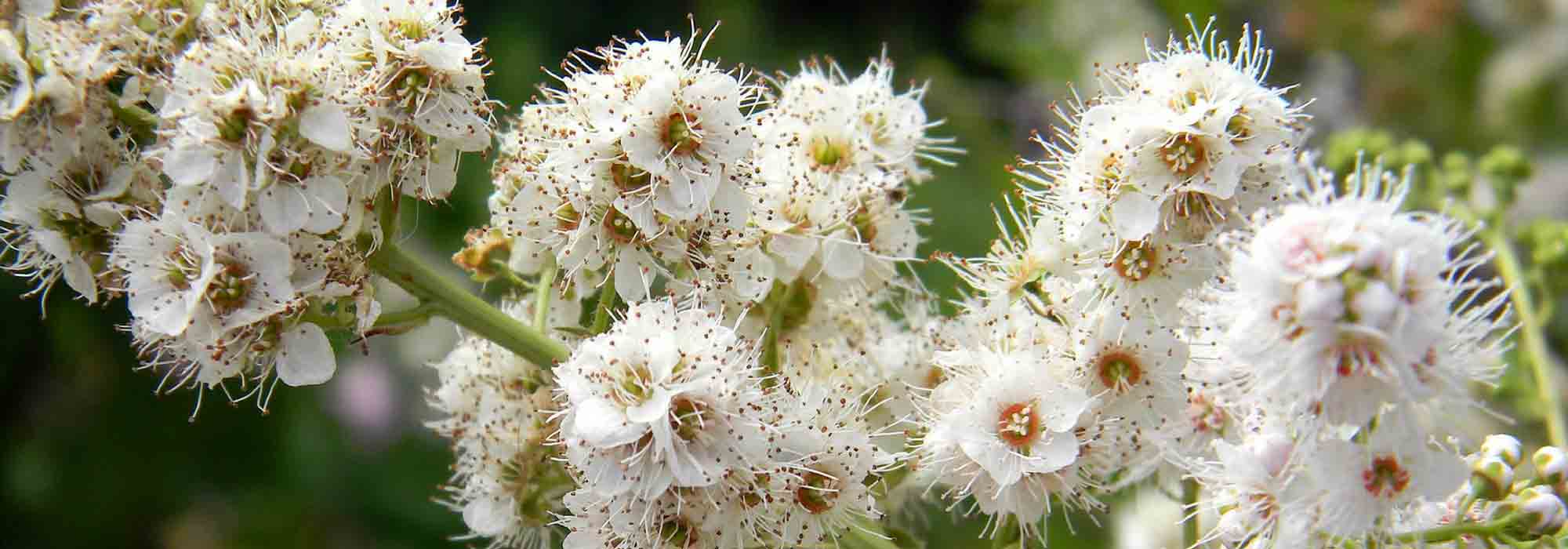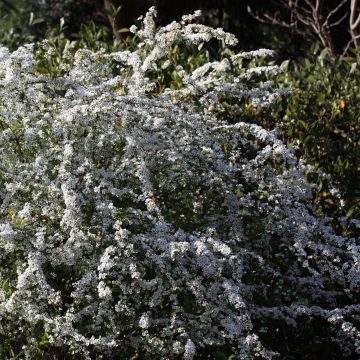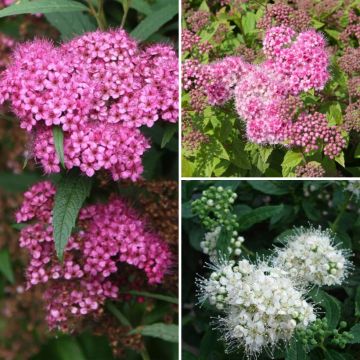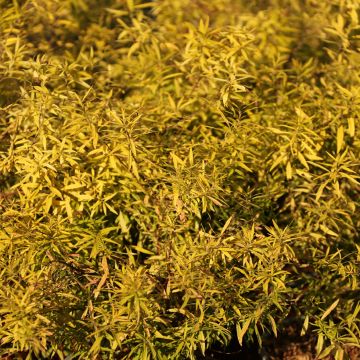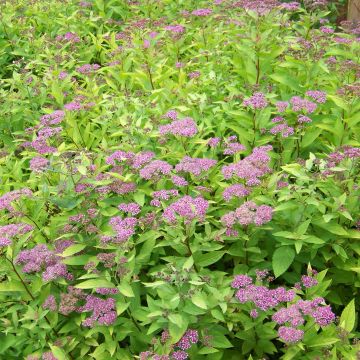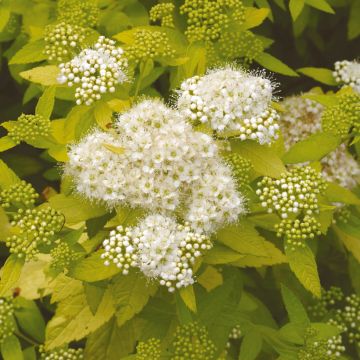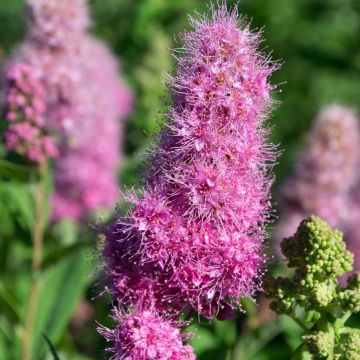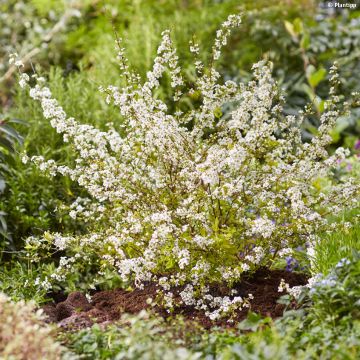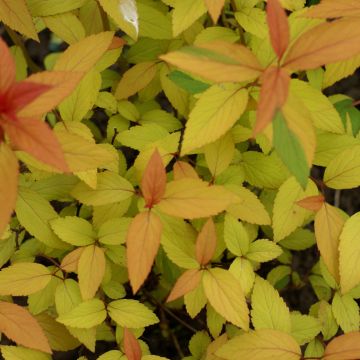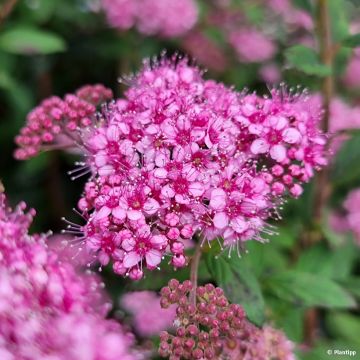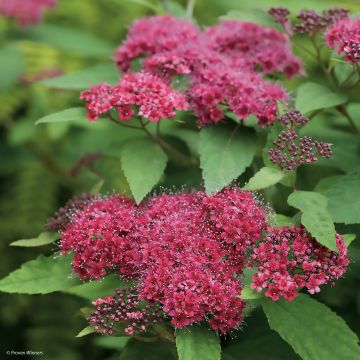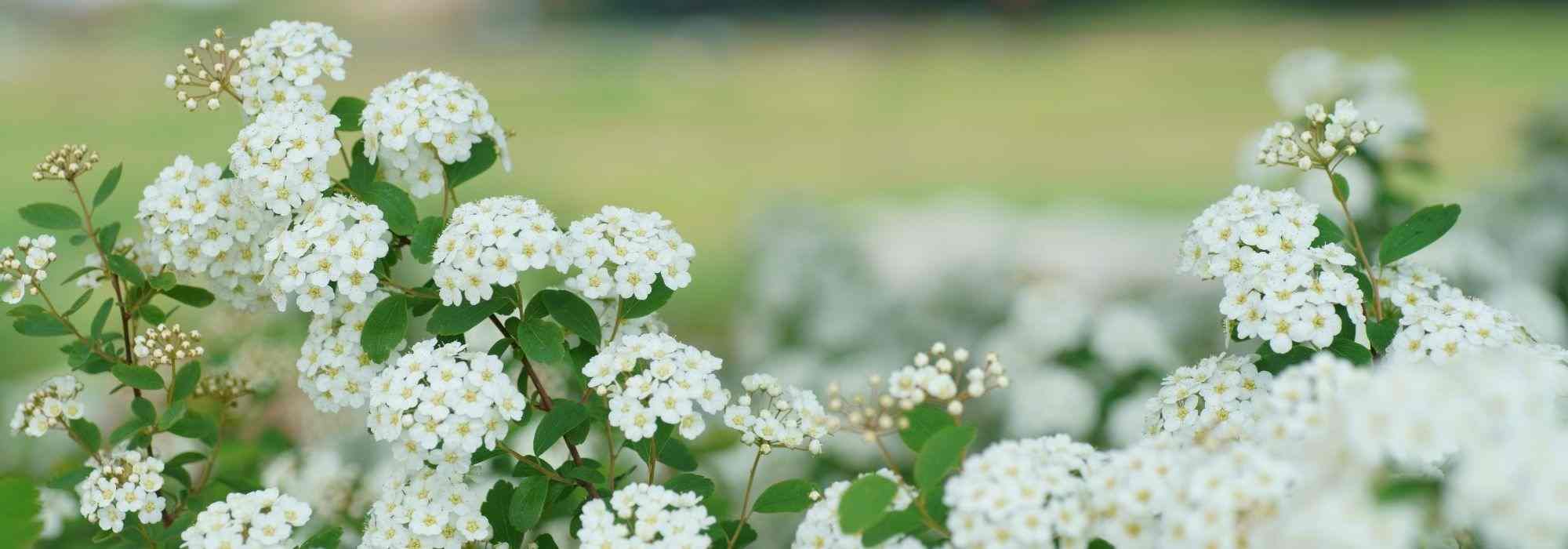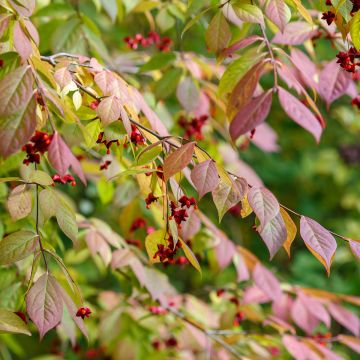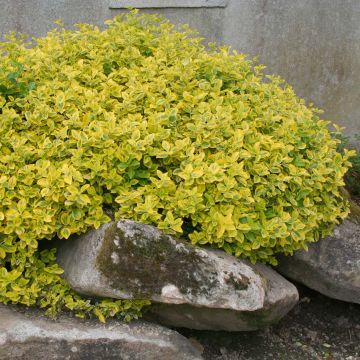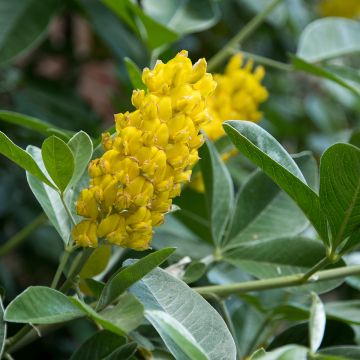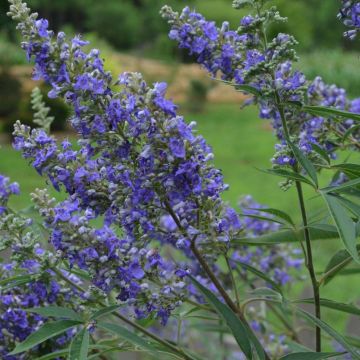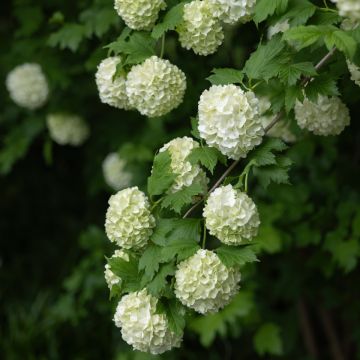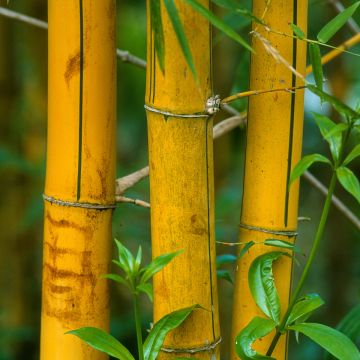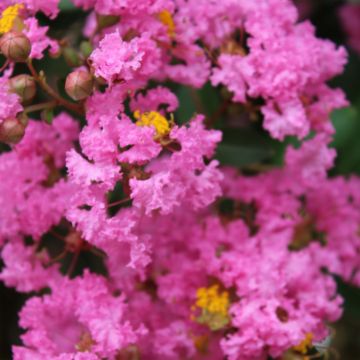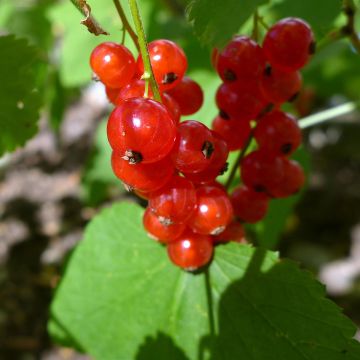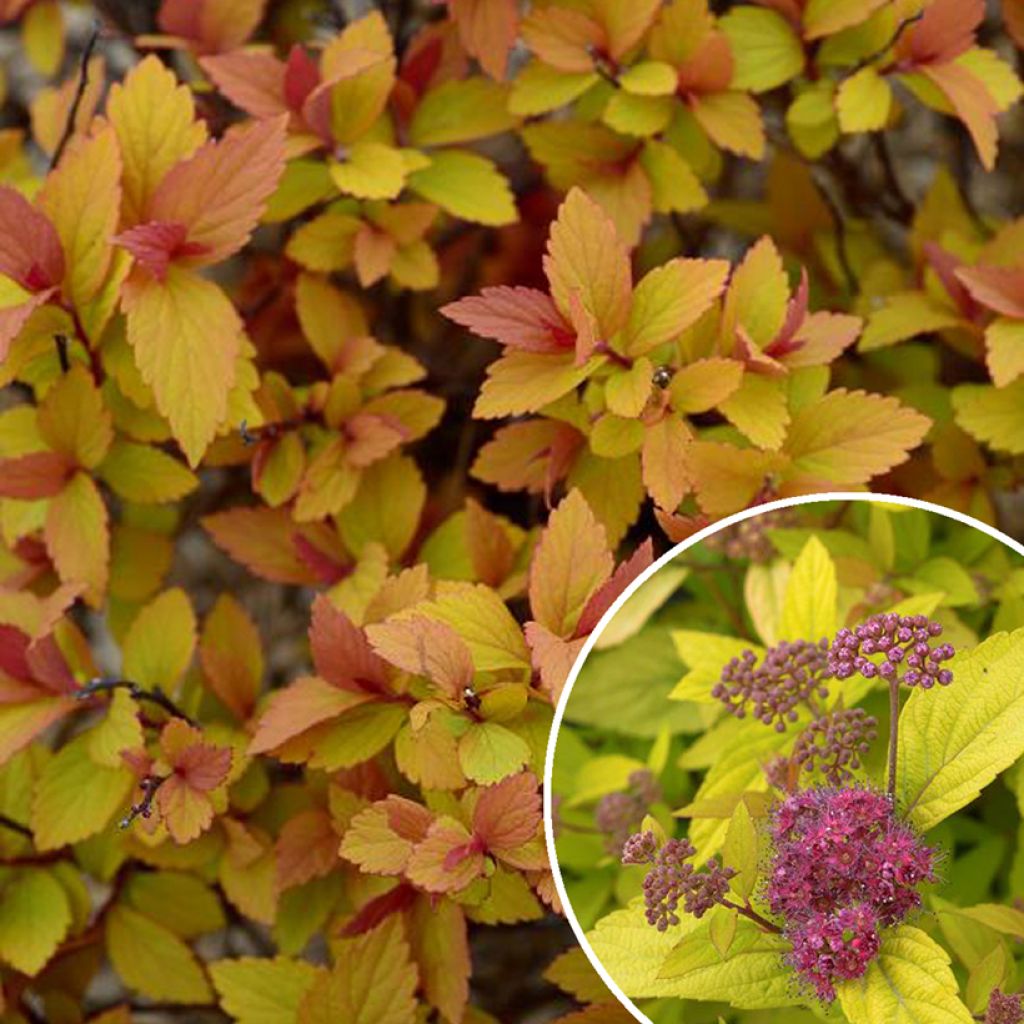

Spiraea japonica Minspil04 LITTLE FLAME
Spiraea japonica Minspil04 LITTLE FLAME
Spiraea japonica Minspil04 (LITTLE FLAME®)
Japanese Spiraea, Japanese Meadowsweet, Maybush, Shimotsuke
Special offer!
Receive a €20 voucher for any order over €90 (excluding delivery costs, credit notes, and plastic-free options)!
1- Add your favorite plants to your cart.
2- Once you have reached €90, confirm your order (you can even choose the delivery date!).
3- As soon as your order is shipped, you will receive an email containing your voucher code, valid for 3 months (90 days).
Your voucher is unique and can only be used once, for any order with a minimum value of €20, excluding delivery costs.
Can be combined with other current offers, non-divisible and non-refundable.
Home or relay delivery (depending on size and destination)
Schedule delivery date,
and select date in basket
This plant carries a 24 months recovery warranty
More information
We guarantee the quality of our plants for a full growing cycle, and will replace at our expense any plant that fails to recover under normal climatic and planting conditions.
Does this plant fit my garden?
Set up your Plantfit profile →
Description
Spiraea japonica 'Little Flame' is a particularly compact and ornamental variety of Japanese Spiraea. Naturally forming a low and dense cushion, this dense miniature shrub changes colour throughout the seasons, ranging from orange to yellow, and from green to bronze orange. In early summer, a lovely dark pink flowering appears, which stands out well against the foliage. Hardy and easy to grow in most situations, this plant only fears too much direct sunlight. It is perfect as a low border plant, at the front of a flower bed, or even in a decorative pot on a terrace.
The 'Little Flame' Japanese Spiraea belongs to the extensive Rosaceae family. The Spiraea genus includes more than 80 species of deciduous shrubs native to temperate regions of the northern hemisphere. Spiraea japonica is part of the spontaneous flora of Japan and Korea, where it forms an upright shrub reaching a height of 1.50m, with oval leaves and pink flowering in large corymbs measuring 15 to 20cm in diameter. The species has given rise to several horticultural varieties commonly planted in parks and gardens.
The 'Minspil04' LITTLE FLAME® spiraea is a creation of the Minier Nurseries near Angers, introduced to the market in 2018. It is an improvement on the famous variety 'Goldflame', which has been extremely popular for many years. 'Little Flame' is much more compact, as it does not exceed 50cm in height and width, making it easy to grow in a container. It has a dense and bushy habit, naturally forming a decorative dome. The small elliptical leaves, with pointed tips and dentate edges, are alternately arranged on the slender branches. Their colour variations throughout the year provide a strong ornamental appeal. In spring, the young shoots turn bright orange-pink, sometimes bordering on red, giving the plant a particularly vibrant appearance. The foliage then changes to golden yellow, followed by light green in summer, before igniting again in a festival of orange and bronze in autumn, before falling to the ground. In June, flat umbels of bright pink flowers appear, perfectly highlighted by the yellow foliage. They attract pollinators such as butterflies and bees, adding to the plant's ornamental value and biodiversity in the garden.
Highly attractive due to the colourful variations in its foliage, this little 'Little Flame' Spiraea is very hardy and easy to grow. While sunlight enhances its colouration, one should be cautious of too much direct sunlight in southern regions and choose a slightly shaded location, where it will enliven the area with its joyful and bright colours. Plant it at the edge of a flower bed, in front of green-leaved plants that will enhance its appearance. Philadelphus 'Belle Etoile', a Mock Orange with fragrant white flowers that bloom at the same time as Spiraea, will be perfect in this role, as well as a Winged Euonymus, Euonymus alatus, whose green deciduous foliage ignites with red and purple in autumn. A Forsythia 'Mikador' bush, covered in bright yellow flowers in March-April, will extend the flowering period of your diverse flower bed. And for summer, nothing beats an Oakleaf Hydrangea like Hydrangea quercifolia 'Jetstream', with its panicles of white flowers that last until October, gradually turning pink, while the imposing foliage colours in red and dark purple in autumn.
Plant habit
Flowering
Foliage
Botanical data
Spiraea
japonica
Minspil04 (LITTLE FLAME®)
Rosaceae
Japanese Spiraea, Japanese Meadowsweet, Maybush, Shimotsuke
Cultivar or hybrid
Other Spiraea
View all →Planting and care
Plant the 'Little Flame' Japanese Spirea in any soil that is not too dry but well-drained, in partial shade in hot regions, or in full sun in less sunny climates. The bush will adapt to all climates and all soils, but it dislikes dense shade or extremely hot and arid conditions. Water well in the first year to promote root growth, and once established, the plant can tolerate moderately dry periods.
This bush flowers on one-year-old branches. Therefore, if pruning is necessary, it should be done sparingly by removing one-third of the flowering branches every other year, just after flowering, to avoid missing out on flowers the following spring. Light pruning encourages a slight re-flowering. Apply a complete fertilizer in March. Plant the bushes with a spacing of 40cm if you want to create a dense carpet.
Planting period
Intended location
Care
Planting & care advice
This item has not been reviewed yet - be the first to leave a review about it.
Similar products
Haven't found what you were looking for?
Hardiness is the lowest winter temperature a plant can endure without suffering serious damage or even dying. However, hardiness is affected by location (a sheltered area, such as a patio), protection (winter cover) and soil type (hardiness is improved by well-drained soil).

Photo Sharing Terms & Conditions
In order to encourage gardeners to interact and share their experiences, Promesse de fleurs offers various media enabling content to be uploaded onto its Site - in particular via the ‘Photo sharing’ module.
The User agrees to refrain from:
- Posting any content that is illegal, prejudicial, insulting, racist, inciteful to hatred, revisionist, contrary to public decency, that infringes on privacy or on the privacy rights of third parties, in particular the publicity rights of persons and goods, intellectual property rights, or the right to privacy.
- Submitting content on behalf of a third party;
- Impersonate the identity of a third party and/or publish any personal information about a third party;
In general, the User undertakes to refrain from any unethical behaviour.
All Content (in particular text, comments, files, images, photos, videos, creative works, etc.), which may be subject to property or intellectual property rights, image or other private rights, shall remain the property of the User, subject to the limited rights granted by the terms of the licence granted by Promesse de fleurs as stated below. Users are at liberty to publish or not to publish such Content on the Site, notably via the ‘Photo Sharing’ facility, and accept that this Content shall be made public and freely accessible, notably on the Internet.
Users further acknowledge, undertake to have ,and guarantee that they hold all necessary rights and permissions to publish such material on the Site, in particular with regard to the legislation in force pertaining to any privacy, property, intellectual property, image, or contractual rights, or rights of any other nature. By publishing such Content on the Site, Users acknowledge accepting full liability as publishers of the Content within the meaning of the law, and grant Promesse de fleurs, free of charge, an inclusive, worldwide licence for the said Content for the entire duration of its publication, including all reproduction, representation, up/downloading, displaying, performing, transmission, and storage rights.
Users also grant permission for their name to be linked to the Content and accept that this link may not always be made available.
By engaging in posting material, Users consent to their Content becoming automatically accessible on the Internet, in particular on other sites and/or blogs and/or web pages of the Promesse de fleurs site, including in particular social pages and the Promesse de fleurs catalogue.
Users may secure the removal of entrusted content free of charge by issuing a simple request via our contact form.
The flowering period indicated on our website applies to countries and regions located in USDA zone 8 (France, the United Kingdom, Ireland, the Netherlands, etc.)
It will vary according to where you live:
- In zones 9 to 10 (Italy, Spain, Greece, etc.), flowering will occur about 2 to 4 weeks earlier.
- In zones 6 to 7 (Germany, Poland, Slovenia, and lower mountainous regions), flowering will be delayed by 2 to 3 weeks.
- In zone 5 (Central Europe, Scandinavia), blooming will be delayed by 3 to 5 weeks.
In temperate climates, pruning of spring-flowering shrubs (forsythia, spireas, etc.) should be done just after flowering.
Pruning of summer-flowering shrubs (Indian Lilac, Perovskia, etc.) can be done in winter or spring.
In cold regions as well as with frost-sensitive plants, avoid pruning too early when severe frosts may still occur.
The planting period indicated on our website applies to countries and regions located in USDA zone 8 (France, United Kingdom, Ireland, Netherlands).
It will vary according to where you live:
- In Mediterranean zones (Marseille, Madrid, Milan, etc.), autumn and winter are the best planting periods.
- In continental zones (Strasbourg, Munich, Vienna, etc.), delay planting by 2 to 3 weeks in spring and bring it forward by 2 to 4 weeks in autumn.
- In mountainous regions (the Alps, Pyrenees, Carpathians, etc.), it is best to plant in late spring (May-June) or late summer (August-September).
The harvesting period indicated on our website applies to countries and regions in USDA zone 8 (France, England, Ireland, the Netherlands).
In colder areas (Scandinavia, Poland, Austria...) fruit and vegetable harvests are likely to be delayed by 3-4 weeks.
In warmer areas (Italy, Spain, Greece, etc.), harvesting will probably take place earlier, depending on weather conditions.
The sowing periods indicated on our website apply to countries and regions within USDA Zone 8 (France, UK, Ireland, Netherlands).
In colder areas (Scandinavia, Poland, Austria...), delay any outdoor sowing by 3-4 weeks, or sow under glass.
In warmer climes (Italy, Spain, Greece, etc.), bring outdoor sowing forward by a few weeks.






























